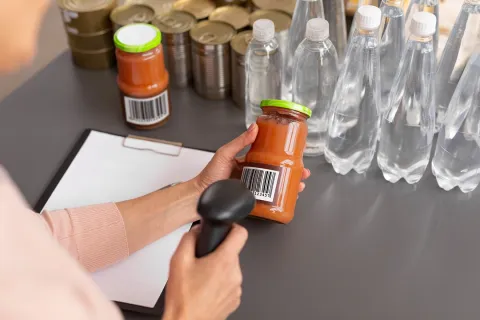EU Labeling Services - Overview
For medicines, EMA and various other national medicine evaluation agencies require that certain documents, including the Summary of Product Characteristics (SmPC), the Patient Information Leaflet (PIL), and the packaging and labeling texts, be presented in the official language or languages of the Member States or markets in which the medicinal product is to be placed.
When more than one (01) language is employed, there should be a text available in each language, and their contents should all be identical. A manufacturer cannot apply for drug registration without submitting these relevant documents, all appropriately translated and localized, to the European or national Regulatory authorities. Even after obtaining the authorization, the company must keep the concerned authority informed about all the post-authorization labeling changes done in line with the product updates through relevant communication channels.
The organization must also be on the lookout for periodic recommendations given by the Pharmacovigilance Risk Assessment Committee (PRAC), which may impose a change in the EU product labeling requirements. Additionally, tracking EMA’s reviews and updates on Quality Review of Documents (QRD) templates for product information will help in local/regional label comparison and thus, align with the latest applicable template.
Language Translation and Localization Challenges for the Pharmaceutical Industry in the EU
Pharmaceutical companies manufacturing within the borders of the European Union (EU) need to make the Summary of Product Characteristics (SmPC), the Patient Information Leaflet (PIL), and the packaging and labeling texts available in up to twenty-three (23) official languages of the regional labeling EU.
The languages of the European Economic Area (EEA), new EU candidate countries, and recognized minorities’ additional languages include those countries that are non-EU but EEA members (Norway and Iceland) and candidate EU countries (Croatia, Serbia, and Macedonia). Additionally, other possible required languages are those of the recognized minorities in the EU, such as Catalan, Corsican, Frisian, and Welsh.
Twenty (20) Days to Produce Translations
The EMEA sets a strict time limit of twenty (20) days for the submission of the translated versions of all documents. Initial translations must be provided within five (05) days. After the marketing authorization is given by the CPMP, the EMEA committee is responsible for assessing marketing authorizations. By the 20th day, the revised versions of the translations must also be provided to the EMEA in their final publishing format.
Culture-specific Translation and Localization Problems: Differences in norms and conventions of the source and target culture (e.g., legal guidelines for PIL, differences in PIL usability regulations, and differences in expressions, symbols, and pictograms established by the Member States) must also be considered while translating documents.
Multilingual PIL Readability Testing: Each language package leaflet must be written comprehensively and legibly. The patient should be able to understand what is written in it. Patient Information Leaflet (PIL) readability testing is the procedure by which the PILs are tested and reformulated to ensure they meet the EU labeling requirements.
Product Updates: Updates to product information can result from changes in legislation or product changes through discoveries. Such updates take place a couple of times every year. In each case, the pharmaceutical company must go through processes like those they undergo when applying for initial drug approval. For this reason, the translation of documents is again required.
Consequences of Mistranslations: When it comes to medicine specifications, usage, dosage, and side effects, incompetent translations and mistranslations can lead to uncertain consequences. Developing a new medicine is a costly and lengthy process. A faulty translation can result in a market delay or lead to product recalls. In some cases, it can even lead to product liability lawsuits. In such a scenario, and to eliminate risk factors, RA experts need to collaboratively work with professional language translation providers, preferably on a long-term basis.
To assist organizations in sailing through the EU labeling requirements business imperatives, Freyr offers specialized EU Regulatory Labeling Services for the region.
Regional Labeling EU
- Quality Review of Documents (QRD)
- Drafting/Creating the Summary of Product Characteristics (SmPC), Patient Information Leaflet (PIL), and Labeling Text (LT)
- Creation and review of Annex 1,2,3 & 4
- Linguistic review coordination
- Visual Quality Control (QC) of translated labels
- Biosimilar product labeling
- Labeling changes based on PRAC recommendations
- Local/Regional label comparison with QRD template
- Biosimilar innovator label tracking
- EU clinical trial regulation
- EU labeling guidelines

- The ability to structure EU SmPCs, PILs, and EMA drug labels per European directives
- Possesses a large team with specific expertise in European Regulatory submission with experience in the latest Quality Review of Documents (QRD) groups, templates, etc.
- Assists pharmaceutical companies in conducting Readability User Tests by participating in questionnaire creation, translation, and localization for the target group in question, while also providing relevant language interviewers and interpreters
- Usage of a coherent content management strategy. This includes maintaining area-specific dictionaries and glossaries and enabling the reuse of repetitive content across drug approval-related documents
- Provides accurate localization and language adaptation of EU SmPCs or PILs per specific project requirements and official legislation requirements, whether in a national or centralized registration or a mutual recognition procedure
- Delivering precise labels in high volumes and within tight deadlines, abiding by EU labeling requirements





